Spitfire MK.XII Conversion
for Tamiya's Spitfire Mk.VIII / IX kits
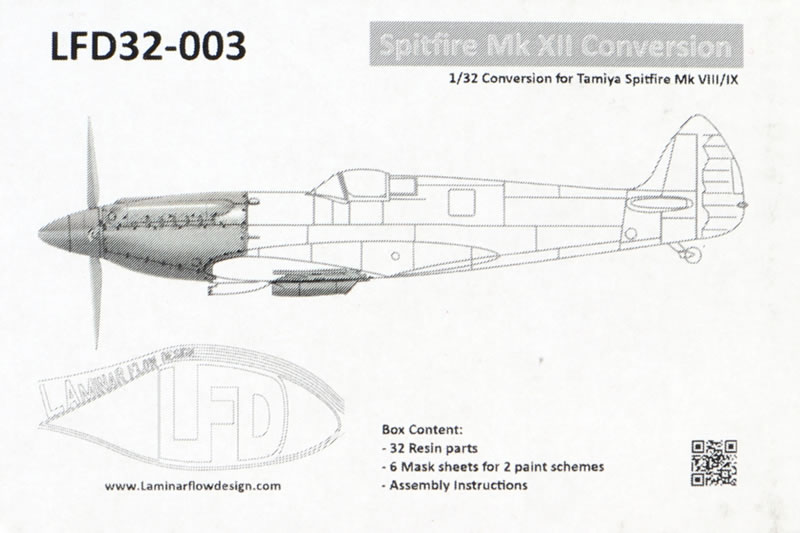
Laminar Flow Design, 1/32 scale
| S u m m a r
y |
| Catalogue Number, Description, Scale & Price |
Laminar Flow Design's Item No. LFD32-003 - Spitfire MK.XII Conversion for Tamiya's Spitfire Mk.VIII / IX kits
€59.29 plus shipping available online from Laminar Flow Design's web store |
| Contents and Media: |
32 parts in grey 3d printed resin; six self-adhesive, die-cut masking sheets for two paint schemes; instructions |
| Scale: |
1/32 scale |
| Review
Type: |
FirstLook |
| Advantages: |
Perftectly printed resin; high level of surface textures including panel lines, rivets, fasteners; hollowed-out exhaust stack ends; minimal surgery to donor kit. |
| Disadvantages: |
None noted. |
| Recommendation: |
If you have always longed for a high-quality 1/32 scale Spitfire Mk.XII, Laminar Flow Design has now answered your prayers. This is a very high quality product with surface textures equalling the Tamiya donor kit. The design is clever and allows for assembly with a minimum of surgery on Tamiya's 1/32 scale Spitfire Mk.VIII or Mk.IX kits. Removing the parts on this conversion seems to have been easier than earlier releases, Fitting the resin conversion parts looks like it will be relatively straightforward too. |
Reviewed by
Brett Green

The Mk XII was the first Spitfire powered by a Griffon engine to go into service. The first of 100 Supermarine-built production aircraft started appearing in October 1942; two RAF squadrons in total were equipped with the XII. Mk XIIs were manufactured from Mk Vc and Mk VIII airframes: early production aircraft had the fixed tail wheels, Dunlop AH2061 pattern five spoke main wheels and small elevator balances. They had a single 85 gal main fuel tank, giving a short range of little over 380 miles (610 km) on internal fuel. All were fitted with the larger, pointed tip rudder. The last 45 or so Mk XIIs, were based on Mk VIIIs with two wing fuel tanks, each containing a maximum fuel load of 14 gal, and featured the larger horn balances, retractable tailwheel and undercarriage legs with torque-links, "dished" leg fairings and the stronger Dunlop AH10019 four spoke wheels. The wheels were occasionally fitted with disc-style covers. A later model IFF was fitted, replacing the aerials from the tailplane tip to fuselage with a rod aerial under the starboard wing. Another important feature of the Griffon-engine Spitfires was the entirely flush-riveted finish which was progressively introduced on all Spitfires.
The single-stage Griffon engine (II or IV) gave the aircraft superb low and medium level performance, although the Mk XII's performance declined at higher altitudes: because of this all production aircraft had "clipped" wings. In comparative tests with a Mk IX it was 14 mph (23 km/h) faster at sea level, but above 20,000 ft (6,100 m) it had become slower. Handling, however, was considered to be better than previous Spitfire marks, and the clipped wings conferred excellent manoeuvrability through enhanced aileron response.
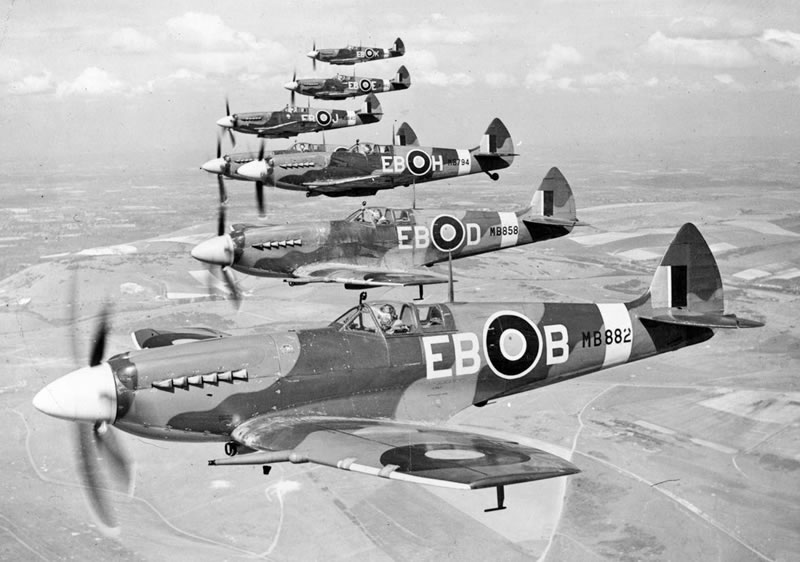
At low altitude it was one of the fastest aircraft in the world; in one speed trial, held at Farnborough in July 1942 DP485 (now referred to as the Mk XII) piloted by Jeffrey Quill raced ahead of a Hawker Typhoon and a captured Focke-Wulf Fw 190, contrary to expectations.
On reflection the general scheme became clear. The Spitfire was to be a sort of datum pacemaker – 'Mr Average Contemporary Fighter' – and its job would be to come in last, the real excitement of the proceedings being by how much it would be beaten by the Fw 190 and the Typhoon, and which of these two bright stars would beat the other and by how much. Outside on the tarmac at Worthy Down stood the inoffensive-looking but highly potent DP485 ... All went according to plan until, when we were about halfway between Odiham and Farnborough and going flat out, I was beginning to overhaul the Fw 190 and the Typhoon. Suddenly I saw sparks and black smoke coming from the Fw 190's exhaust ... and I shot past him and never saw him again. I was also easily leaving the Typhoon behind and the eventual finishing order was, first the Spitfire, second the Typhoon, third the Fw 190. This was precisely the opposite result to that expected, or indeed intended. It certainly put the cat among the pigeons and among the VIPs.
However pilots found it difficult to exploit this advantage in combat as German pilots were reluctant to be drawn into dogfights with Spitfires of any type below 20,000 feet (6,100 m). When the Mk XII was able to engage in combat it was a formidable fighter and several Fw 190s and Bf 109Gs fell victim to it. The Mk XII's speed advantage at lower altitudes again became useful near the end of its front line service in summer 1944, when its pilots were credited with 82.5 V-1 Flying Bomb kills.
The Mk XII variant was retired in September 1944.
Laminar Flow Design is a recent company from Belgium that is producing a range of 3d printed aircraft conversions and accessories.
Their debut production was a 1/32 scale Spitfire F/FR XIVe conversion for Tamiya's Spitfire Mk.XVI kit. This was followed by a Mk.XIV high back conversion and a cockpit detail set.
Now Laminar Flow has produced a conversion of the first operational Griffon-powered Spitfire, the Mk.XII. This has never been available as a 1/32 scale kit previously. I am not even aware of a previous conversion in this scale.
Laminar Flow's 1/32 scale Spitfire Mk.XII conversion is delivered in a stout cardboard box. Inside are two resin cages that enclose the parts securely.
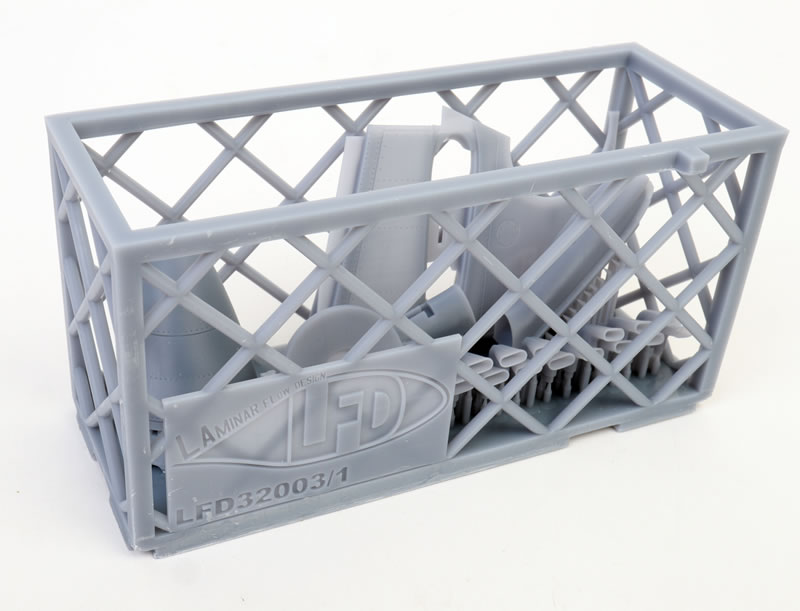
The set comprises 32 grey 3d printed resin parts, six self-adhesive, die-cut masking sheets and detailed instructions.
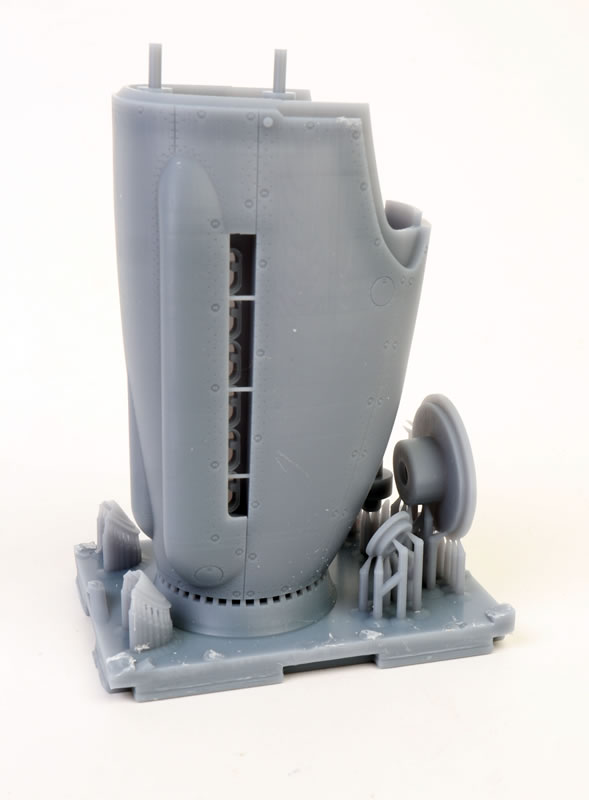
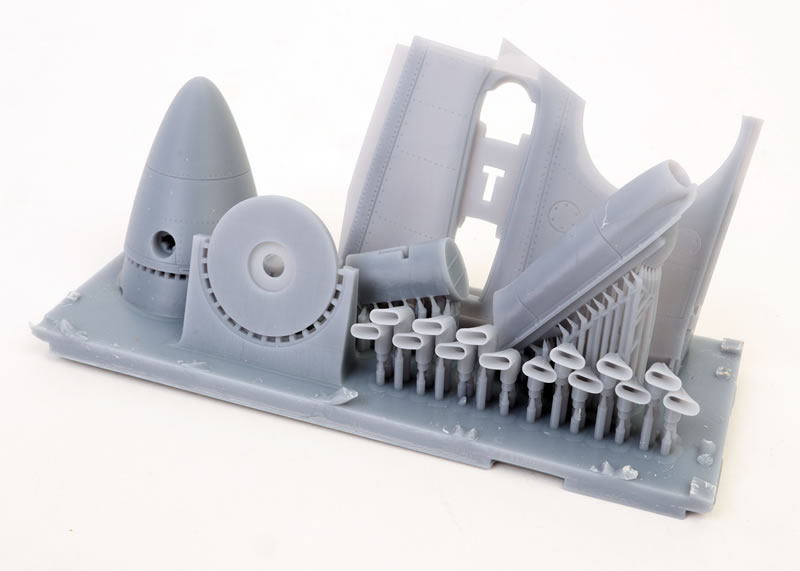
The instructions advise the modeller to cut the four pillars at the base of each cage, then work inward as required. It is also recommended that a razor saw or a new scalpel blade should be used to free the parts.
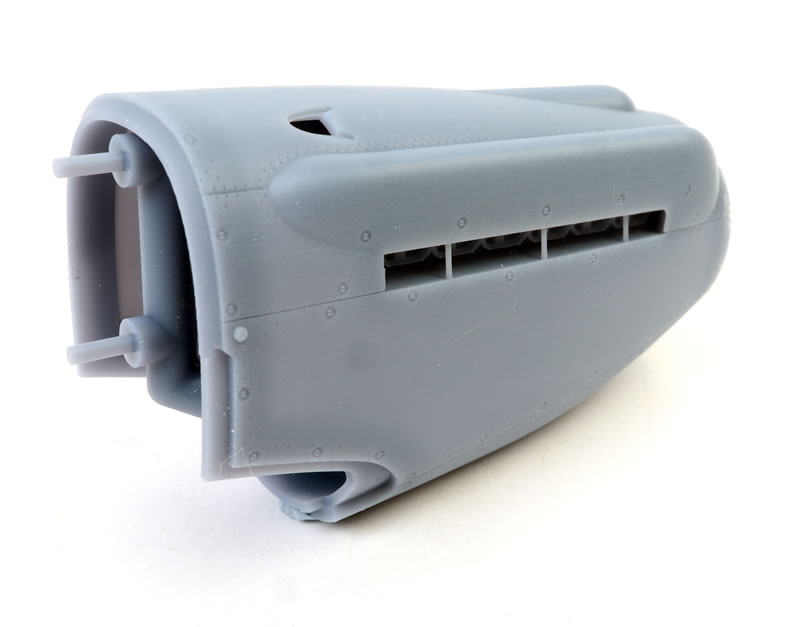
I used a combination of a sprue cutter and a new hobby knife blade to remove the cage and then separate all the individual parts. Removing the parts from their cage on this conversion seems to have been more straightforward than Laminar Flow's earlier releases. Some changes to the parts breadown should make fitting the resin conversion parts easier too.
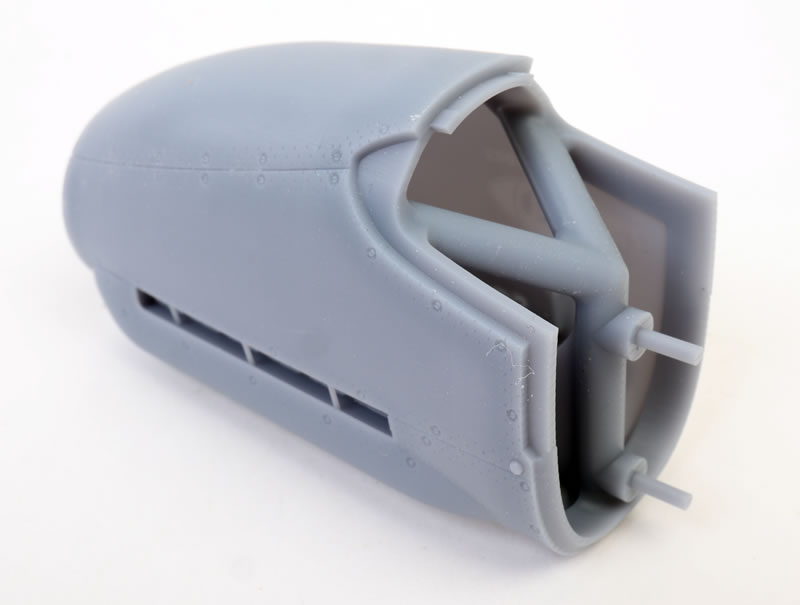
Once the parts have been freed, you can appreciate the quality of this conversion.
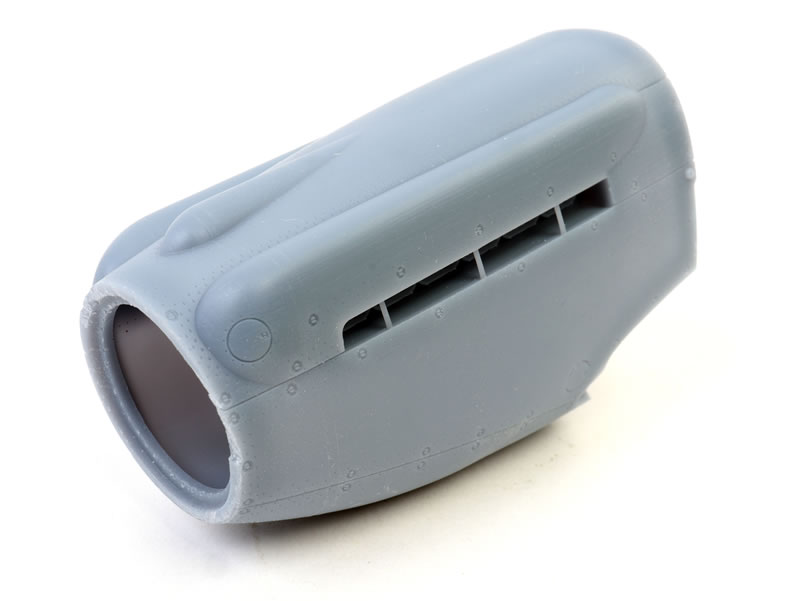
Surface textures are as good as the Tamiya kit - high praise indeed. External surfaces feature panel lines, rivets, fasteners, rib tape on fabric surfaces and more, all crisply and evenly recessed.
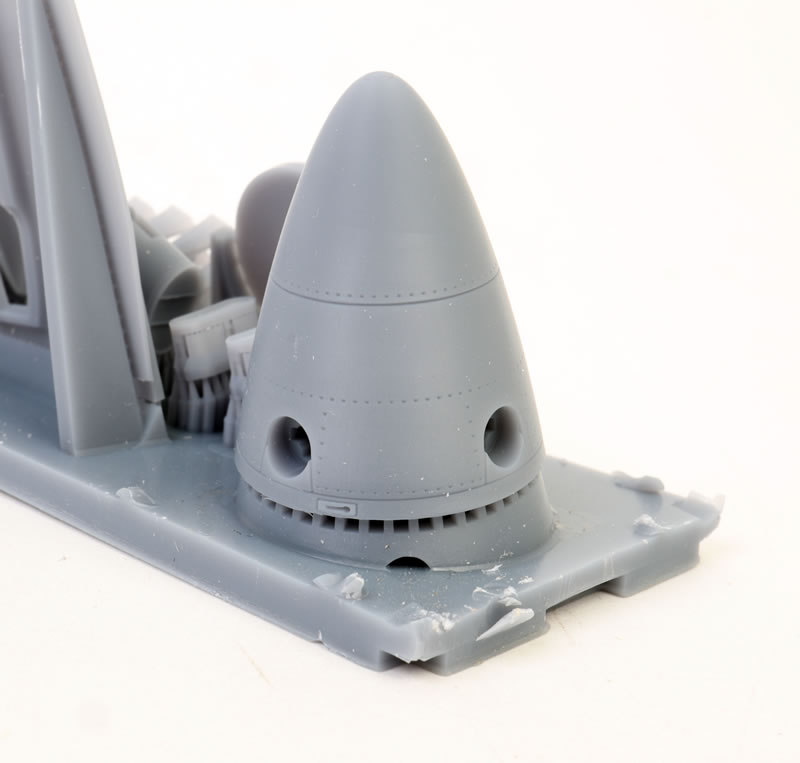
The jewel in the crown is the big, one-piece nose. This captures the bulky lines of the Griffon powerplant beautifully.
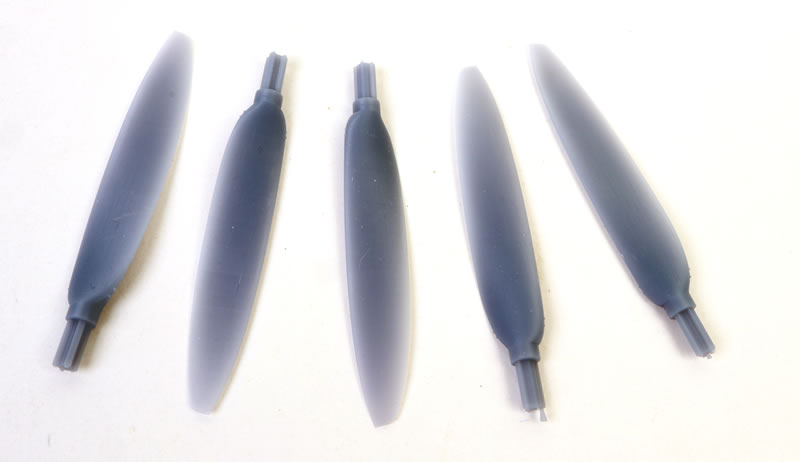
The instructions suggest that the outside surfaces may require Surfacer and some sanding. However, striations and other printing artefacts are almost non-existent. Any marginal benefit of further surface preparation will be countered by the risk of damaging the lovely fine surface textures.
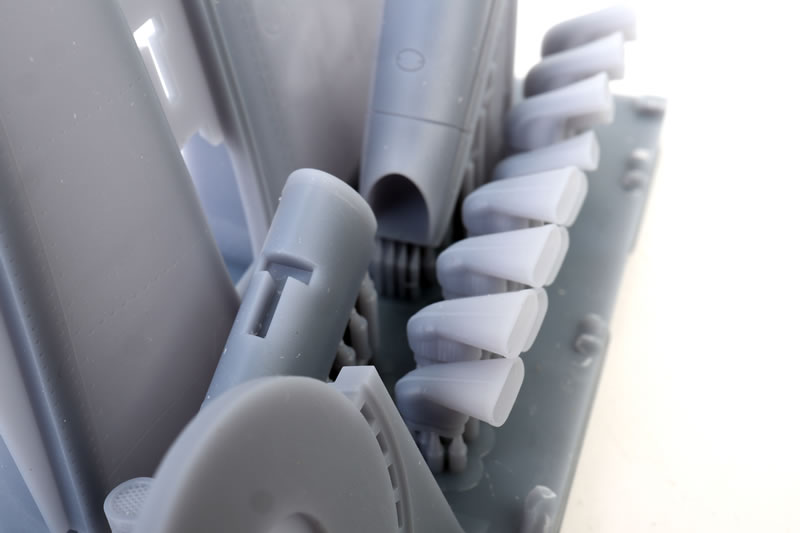
Here is a full list of the parts:
The instructions are clearly laid out and include text and photographic assembly steps.
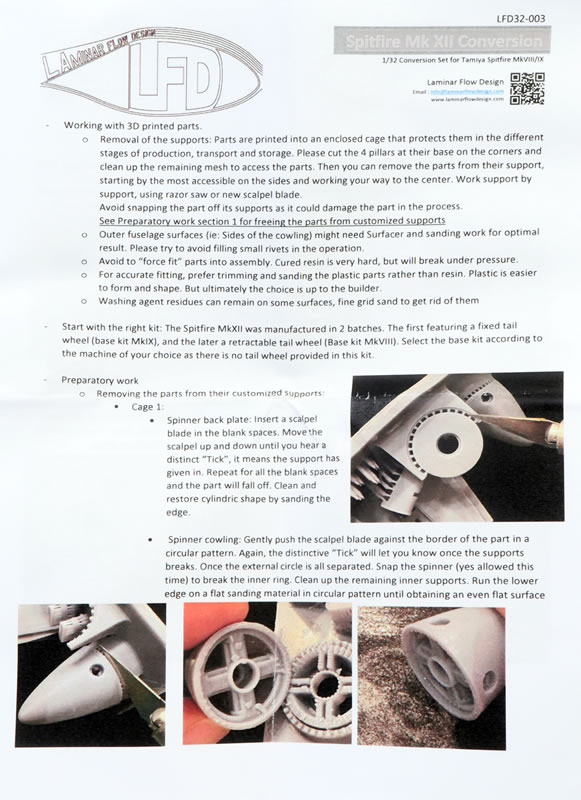
Remarkably, the conversion only requires a single straightforward cut in the the underwing area of the Tamiya kit.
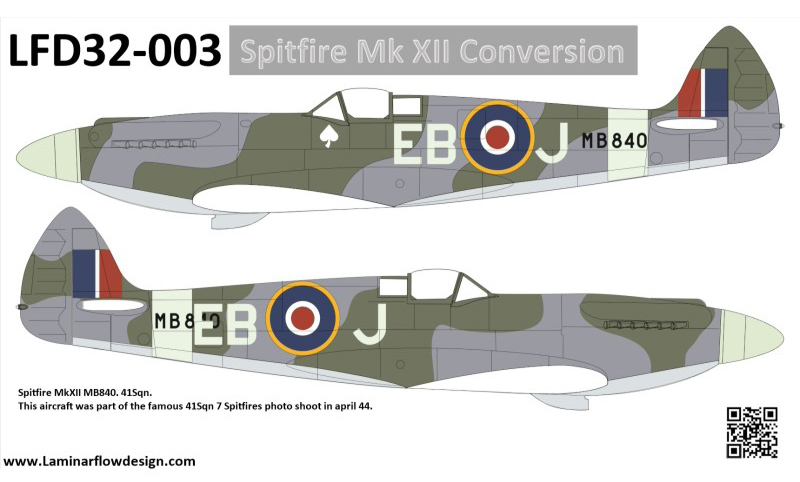
Markings for two RAF aircraft - 415 Sqn and 91 Sqn - are offered on the six self-adhesive die-cut vinyl masking sheets.
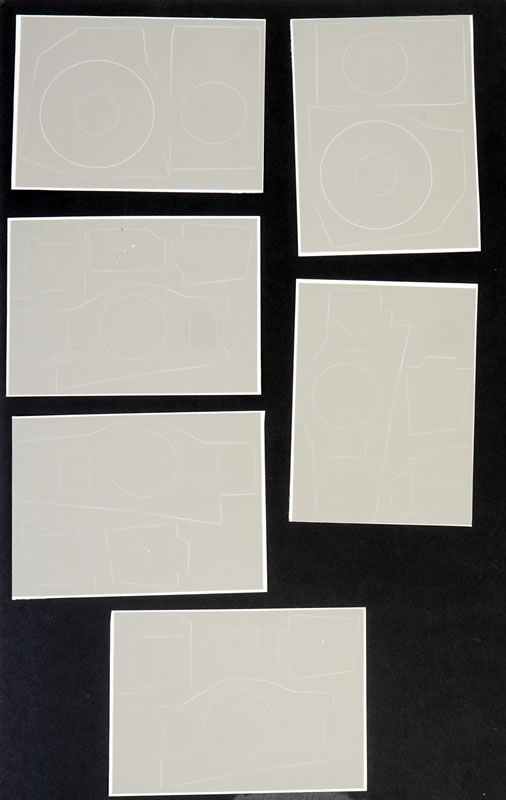
If you have always longed for a high-quality 1/32 scale Spitfire Mk.XII, Laminar Flow Design has now answered your prayers.
This is a very high quality product with surface textures equalling the Tamiya donor kit.
The design is clever and allows for assembly with a minimum of surgery on Tamiya's 1/32 scale Spitfire Mk.VIII or Mk.IX kits.
Removing the parts on this conversion seems to have been easier than earlier releases.
Fitting the resin conversion parts looks like it will be relatively straightforward too.
Thanks to Laminar Flow Design for the sample
Text and Images Copyright © 2024 by Brett Green
Page Created 12 April, 2024
Last updated
12 April, 2024
Back to HyperScale
Main Page
Back to Reviews Page
|
Home
| What's New |
Features |
Gallery |
Reviews |
Reference |
Forum |
Search